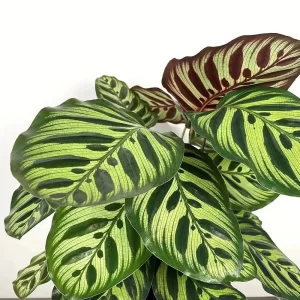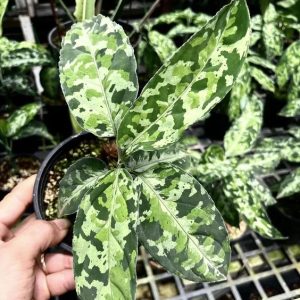- English
- Chinese
- French
- German
- Portuguese
- Spanish
- Russian
- Japanese
- Korean
- Arabic
- Irish
- Greek
- Turkish
- Italian
- Danish
- Romanian
- Indonesian
- Czech
- Afrikaans
- Swedish
- Polish
- Basque
- Catalan
- Esperanto
- Hindi
- Lao
- Albanian
- Amharic
- Armenian
- Azerbaijani
- Belarusian
- Bengali
- Bosnian
- Bulgarian
- Cebuano
- Chichewa
- Corsican
- Croatian
- Dutch
- Estonian
- Filipino
- Finnish
- Frisian
- Galician
- Georgian
- Gujarati
- Haitian
- Hausa
- Hawaiian
- Hebrew
- Hmong
- Hungarian
- Icelandic
- Javanese
- Kannada
- Kazakh
- Khmer
- Kurdish
- Kyrgyz
- Latin
- Latvian
- Lithuanian
- Luxembou..
- Macedonian
- Malagasy
- Malay
- Malayalam
- Maltese
- Maori
- Marathi
- Mongolian
- Burmese
- Nepali
- Norwegian
- Pashto
- Persian
- Punjabi
- Serbian
- Sesotho
- Sinhala
- Slovak
- Slovenian
- Somali
- Samoan
- Scots Gaelic
- Shona
- Sindhi
- Sundanese
- Swahili
- Tajik
- Tamil
- Telugu
- Thai
- Ukrainian
- Urdu
- Uzbek
- Vietnamese
- Welsh
- Xhosa
- Yiddish
- Yoruba
- Zulu
- Kinyarwanda
- Tatar
- Oriya
- Turkmen
- Uyghur

Karịsịa m hụrụ n'anya n'etiti ụlọ ime ụlọ Aficiouos, Ma amanthus plant is well-known for its amazing leaf patterns and unusual plant habits. Their varying hues and textures are aesthetically pleasing and might reveal a “praying” stance at night. For many people’s house décor, the Maranthus plant is the perfect fit for these qualities. Those who want to cultivate Maranthus plants sometimes wonder, nevertheless, how quickly they develop.

Kamet
Maranthus osisi uto
Karịsịa na Brazil na Peru, osisi Maranthus na-egbu egbu na oke ohia nke South America. A na - ahụkarị na ala na etiti ọkwa nke oke mmiri na ebe obibi ha, ha na - ahọrọ gburugburu mmiri na mmiri na mmiri. Maranthus osisi nwere mkpa stricter maka ọnọdụ gburugburu ebe obibi, mana ha nwere ike igosipụta ọkwa mmepe na-arụ ọrụ na gburugburu gburugburu.
Osisi Maranthus dị ka gburugburu ọkụ, n'ihi ya, oke okpomọkụ bụ 18 ℃ ruo 24 ℃. Osisi ahụ na-eto ngwa ngwa n'ime oke okpomọkụ a. Osisi ahụ ga-eji nwayọ nwayọ ma nwee ike ịgwụ ọ bụrụ na ọnọdụ okpomọkụ dara n'okpuru 15 ℃. Osisi ahụ nwere ike ịta ahụhụ site na mmebi emebi mgbe ọnọdụ dị n'okpuru 10 ℃, ya mere na mmebi akwụkwọ ma ọ bụ ụlọ ọrụ dị.
Osisi ahụ dabara na-eto eto na ọkara ma ọ bụ na-agbasa ọnọdụ ọnọdụ dị ka ọ nwere ọkụ ọkụ. Ìhè anyanwụ dị ike nwere ike ịmịpụta akwụkwọ ma metụta oke mmepe. N'ihi ya, ọ bụrụ na tolite n'ime, a ga-edobere ya na ebe dị nro, dị ka n'akụkụ ọwụwa anyanwụ ma ọ bụ ọdịda anyanwụ.
Ihe achoro maka iru mmiri: mmepe mmepe nke osisi na-adabere na iru mmiri dị elu. Ọ na-etolite ngwa ngwa na gburugburu iru mmiri dị elu, a na-echekwa ha kachasị mma na ikuku iru mmiri n'etiti 50 na 70%. Ikuku akọrọ nwere ike belata mmepe osisi na ikekwe na-eduga na akwukwo nkuku na okporo osisi.
The plant so favors well-drained soil high in organic content. The development rate of the plant is directly influenced by the soil’s nutritional contents and air permeability. Either too rich or poor soil may slow down the plant’s growth and possibly lead to issues such root rot.
Plant’s growing rate
The plant’s more complicated development requirements and sensitivity to the surroundings help to explain its normally medium to sluggish growth pace. Though their growth rate is very modest compared to certain fast-growing plants like green ivy or spider plants, the genus Maranthus may nevertheless demonstrate excellent development given the appropriate circumstances.
Omaus Maranthus na-arụpụtakarị akwụkwọ na-eto eto na-eto eto. Dị ka ọ na-adịkarị, akwụkwọ ọhụrụ na-eto kwa izu ole na ole ruo ọnwa ole na ole. Mmụọ nke ala na ihe dị mma nke ndị gbara gburugburu na-emetụta uto nke akwụkwọ dị ka usoro mmepe nke akwụkwọ na-adabere ike na nri. Ihe ogugu amaala Maranthus nwere ike inagide uto ahihia nke oma n'okpuru okpomoku di iche-iche; Ọzọkwa, epupụta ga-enwe agba dị mma na udidi.
Ihe mkpuchi Maranthus nwere usoro mgbọrọgwụ nke ukwuu, n'ihi ya, a ga-eme nke na-agbanwe ma ọ bụ transplanting na nnukwu nlekọta iji gbochie mmebi na mmetụta na mmepe. Ọtụtụ mgbe, mgbọrọgwụ nke Genis Mamanthus gosipụtara karịa mmepe na oge opupu ihe ubi; Ha tinye ọnọdụ nke ọkara oge oyi na oge oyi na ọnụ ọgụgụ na-eme ka ọ dị mma.
Omaus Maranthus nwere ebe dị ala na-adịghị mma; Nọmalị, ha anaghị agbatị ngwa ngwa ma ọ bụ ịrị elu. Ezu eji nwayọ a na-enyere osisi aka ịnwere kọmpat mgbe akọ n'ime, nke toro n'ime, nke ruru eru maka ịchọ mma n'ọtụtụ ụdị nke ime ụlọ.
Factors influencing the Maranthus Plant’s growth rate
Many elements influence the Maranthus plant’s growth rate: light, temperature, humidity, soil quality, and fertilizer delivery among others. Knowing how these elements influence the development of the Maranthus plant will enable farmers to control and manage the growing environment of the plant more effectively, therefore fostering good development of it.
Ọ bụ ezie na osisi Maranthus chọrọ obere ìhè, ọnọdụ ọkụ kwesịrị ekwesị na-enweghị isi ọrụ na-emetụta mmepe. Ọ bụ ezie na obere ọkụ nwere ike ime ka ihe ọkụkụ mepụta nwayọ na akwụkwọ ya ka ọ bụrụ ihe na-egbu egbu, oke ọkụ nwere ike ịkwụsị ihe ọkụkụ na-eto ma na-agba ọkụ. Iji ọkụ dị iche ma ọ bụ ihe dị mma na-eme ka ọ dị mma iji mee ka nkwa na osisi Maranthus na-enweta ìhè kwesịrị ekwesị mgbe tozuru oke n'ime ụlọ.
Temperature and humidity: The fast Maranthus plant development depends on a warm and humid surroundings. Low temperatures or inadequate humidity may seriously slow down a plant’s development and even bring it into a dormant condition. Consequently, particularly in cold or dry locations, aim to have a constant room temperature and appropriate air humidity when growing inside.
Ya mere, ala rụrụ ọrụ ọgaranya na-eme ka ezigbo mmepe nke arrowroot na-eme ka ọ bụrụ ọnụego uto izugbe. Ọdịiche na-ekwesịghị ekwesị ma ọ bụ ọbụna mgbọrọgwụ ọrịa nwere ike ibute ala ogbenye ma ọ bụ nke na-egbu egbu, yabụ ịkwụsị mmepe osisi. Ya mere, usoro abụọ dị mkpa iji gbaa mmepe osisi Arrootroot na-ahọta ala kwesịrị ekwesị ma na-achịkwa usoro zuru oke nke organic fatịlaịza na osisi.
Mmiri na-agba mmiri: ebe mmiri riri mmiri ma ọ bụ nke buru ibu nwere ike ime ka ọ dị ogologo osisi na-agbanye mmiri, ịgbara mmiri kwesịrị ekwesị nwere ike ime ka mmiri bacroot nwere mmiri zuru oke. Ọ bụ ezie na Arrowroot osisi chọrọ ala mmiri ọnọdụ, ha anaghị anabata mmiri, ọ bụ mmiri kwesịrị ịdị mma iji gbochie nkụ ma ọ bụ gbochie mmiri.
Inye nri: A na-akụ akụ na ụba akụ na-esighị ike na nnweta nri. Intertrailization fitù nwere ike inye nri osisi chọrọ ma gbaa ya ume nke agba na uto nke ọhụrụ akwụkwọ niile. N'aka nke ọzọ, obere ma ọ bụ obere fatịlaịza nwere ike ibute nsogbu ma ọ bụ mmepe nke osisi. N'ihi ya, ị chọrọ ịkpachara anya ịhọrọ ụdị kwesịrị ekwesị na usoro nri fatịlaịza ka ị na-etinye ya n'ọrụ.
Kedu otu esi agba mmepe osisi bacworot?
Ọ bụ ezie na osisi Arrowroot na-eto nwayọ, nlekọta kwesịrị ekwesị na njikwa nwere ike inyere ha aka itolite ngwa ngwa, ọ dị ka ime ka ahụike ha na ike ha.
Gbaa mbọ hụ na osisi arrowroot nwere ike ịnweta ìhè zuru oke, nke bụ ntọala maka ịgbalite ezigbo mmepe ha. Karịsịa na ọnọdụ oyi ma ọ bụ nke na-egbu egbu, ị nwere ike ịtụle itinye mgbakwunye ọkụ ọkụ na-enwu na mpaghara ezughị ezu na mpaghara.
Nọgide na-ejide ọnọdụ okpomọkụ kwesịrị ekwesị nwere ike inyere gị aka igbochi nnukwu okpomọkụ mgbe ị na-etolite osisi arrowroot n'ime. Karịsịa na oge ọkọchị ma ọ bụ na gburugburu ikuku, na-enwe ikuku ikuku kwesịrị ekwesị n'otu oge ahụ site na itinye mmiri ikuku ma ọ bụ ịhazi mmiri na-agba gburugburu osisi.
Employ premium soil and suitable flower containers. Select loose soil high in organic matter, then make sure the flower pots have a decent drainage system to stop water from building up at the roots. The flower pot’s dimensions have to be similarly modest. The development rate of the plant will vary depending on too big or too tiny flower pots.
Tinye fatịlaịza mmiri ara di na ya otu ugboro n'ọnwa na-eto eto site na ịnye nri ndị dị mkpa maka osisi ma gbaa anyị ume na mmepe nke agba. Fekọsi ike na-akpọ maka nlekọta nlezianya nke ọnụọgụ iji gbochie ịkachapụta ahịhịa na-eto eto si fatịlaịza siri ike.
Na-eme ka akwụkwọ ochie mee ihe mgbe niile ma ọ bụ nke a kpọnwụrụ akpọnwụ na-enyere aka ilekwasị anya maka akwụkwọ ọhụrụ mgbe ị na-echekwa ọdịdị osisi General. Ọzọkwa, na-eme ka ihichapụ ala na mmerụ ahụ nwere ike inyere photosythesis nwere ike rụọ ọrụ nke ọma, yabụ na-agba ume.

Kamet
Ọ bụ ezie na ọnụego mmepe ha dị obere ma na-akpọkwu ndidi na ume site na ndị na-elekọta ubi, ihe ọkụkụ nke mmanu ama ama abụrụla kpakpando n'etiti ime ụlọ na-eme ihe na-enweghị atụ. Ghọta ọtụtụ ihe na-emetụta ọnụego osisi mahathus na mmejuputa ihe kwesịrị ekwesị na-enyere mmadụ aka ime ka mmepe ha dị mma, ọ na-eme ka ọnọdụ dị mma ha na-eme ka ọ dị mma na gburugburu ime ụlọ. Mụta na ọ bụghị naanị na ọ ga-enyere ndị na-eto eto dị ka ahịhịa na-amasị ma ma amanthus ka ọ bụrụ ihe ha na-eme ka ha bụrụ ihe ndụ na-acha akwụkwọ ndụ na ndụ ndị ọzọ na gburugburu ụlọ.
Previous News
Osisi Katọlere na-eto n'ime ụlọNext News
The environment suitable for the growth of Chin...


